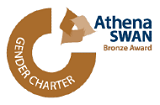
On hyper-bent Boolean functions
Wednesday 19 February 2020, 1.30PM
Speaker(s): Dr Sihem Mesnager (Paris VIII, Telecom ParisTech)
Hyper-bent Boolean functions were introduced in 2001 by Youssef and Gong (and initially proposed by Golomb and Gong in 1999 as a component of S-boxes) to ensure the security of symmetric cryptosystems but no cryptographic attack has been identified till 2016.
Hyper-bent functions have properties still stronger than the well-known bent functions that were already studied by Dillon and Rothaus more than four decades ago. Hyper-bent functions are very rare and whose classification is still elusive. Therefore, not only their characterization but also their generation are challenging problems. In the context of filtered LFSRs, Canteaut and Rotella showed at the 2016 FSE conference that when considering fast correlation attacks, the relevant criterion should no longer be nonlinearity, but rather generalized nonlinearity. Indeed, they showed that if $f+ Tr(\lambda x^k)$ (where $f$ is a Boolean function and `$Tr$'' stands for the absolute trace function over $F_{2^n}$) is biased, then we can apply a fast correlation attack to recover $x_0^k$ where $x_0$ denotes the initial state. If $k$ is coprime to $2^n-1$, then the attack recovers the initial state. Moreover, the case when $k$ is not coprime to $2^n-1$ also leads to another attack and a new criterion to evaluate the security of filtered LFSR. The new criterion given on filtered LFSRs has thus revived interest in the topic of hyper-bent functions. In this talk, we shall give a complete survey on hyper-bent Boolean functions and present very recent results (2020) in this context.
Speaker bio
Sihem Mesnager received a PhD in Mathematics from the University of Pierre et Marie Curie (Paris VI), Paris, France, in 2002 and the Habilitation to Direct Theses (HDR) in Mathematics from the University of Paris VIII, France, in 2012. Currently, she is an Associate Professor in Mathematics at the University of Paris VIII ( France) in the laboratory LAGA (Laboratory of Analysis, Geometry, and Applications), University of Paris XIII and CNRS. She is also Professor adjoint to Telecom ParisTech (France), research group MIC2 in mathematics of the department INFERES, Telecom ParisTech (ex. National high school of telecommunications). Her research interests include discrete mathematics, symmetric cryptography, coding theory, commutative algebra, and computational algebraic geometry. She is Editor in Chief of the International Journal of Information and Coding Theory (IJOCT) published by Inderscience and co-Editor in Chief of the international journal Advances in Mathematics of Communications (AMC) published by AIMS. She is an Associate Editor for the international journal IEEE Transactions on Information Theory (IEEE-IT) and also serves the editorial board of the international journal Cryptography and Communications Discrete Structures, Boolean Functions and Sequences (CCDS) published by SPRINGER, the international journal RAIRO ITA (Theoretical Informatics and Applications) and the International Journal of Computer Mathematics (Published by Taylor Francis). She was a program co-chair for eight International Workshops and served on the board of program committees of twenty international conferences and workshops. She is (co)-author for 125 articles, 2 books, 3 chapters of books and gave approx. 100 national and international conferences. Since 2016, she is president of the French Chapter of IEEE in information theory. At the end of 2019, she has been classified number one at the University of Paris VIII (national evaluation) for her research.
Location: RCH/204
